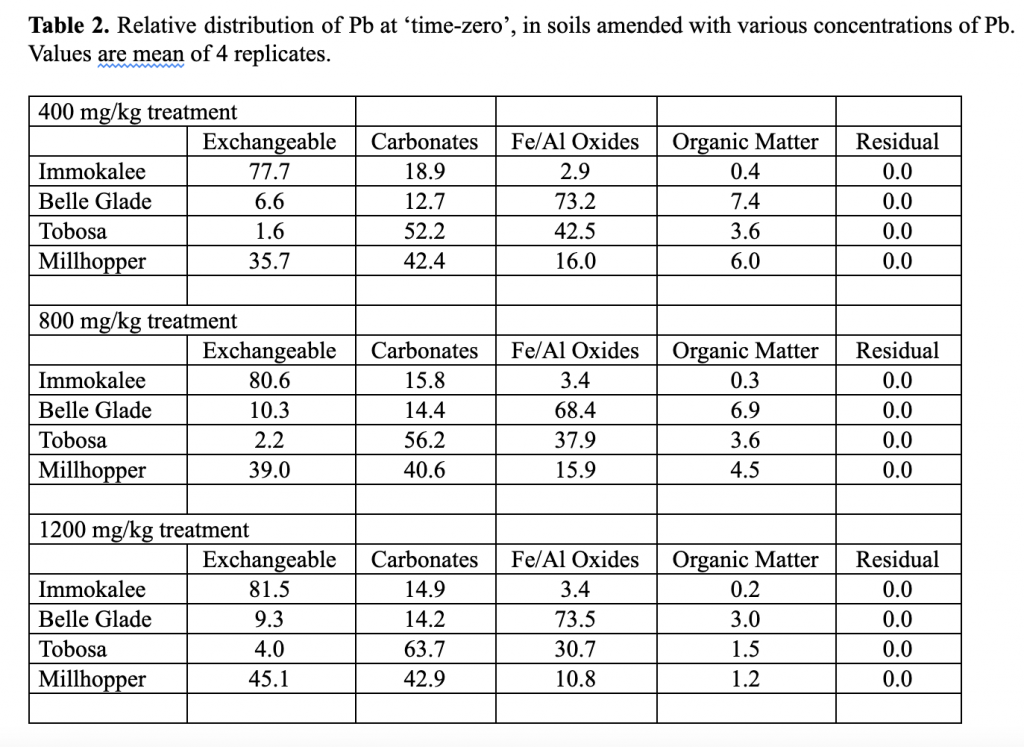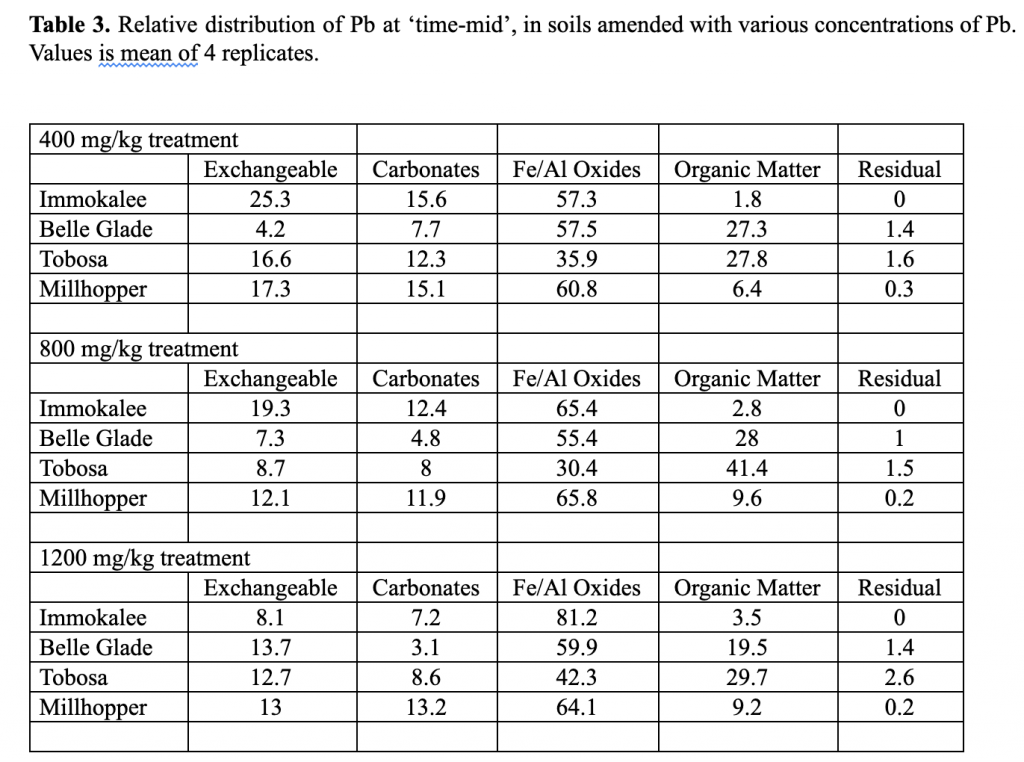Effective phytoremediation depends on factors such as soil chemistry, soil watering holding capacity, lead concentrations, plant species, and lead bioavailability. A greenhouse study of four soils types was conducted to determine the bioavailability of lead. Soil samples include Immokalee, Milllhopper, Belle Glade (Pahokee), and Tobosa. Immokalee soils were collected from Southwest Florida Research and Education Center, Belle Glade was from Everglades Research and Education Center. Tobosa soil was collected from Texas Agricultural Experiment Station, and Millhoppper was collected from the University of Florida. The objective of this study was to determine the effect different soil types had on the bioavailability and the geochemical fate of lead and to determine the relationship between soil properties and lead bioavailability. The four soils were spiked with lead nitrate at 400 ppm (federal soil standards), 800 ppm, and 1200 ppm. Vetiver grass was grown in PVC columns for eight months. Soil samples were collected at time zero right after added amendments and after six months. (Datta, Sarkar, and Andra. 2007).
Physical-chemical properties of the soil concluded that Immokalee is acidic sandy soil. Belle Glade is acidic soil with a high organic matter content. Tobosa is a basic soil with high clay content, and Millhopper is acidic sandy soil. Based on the physical-chemical properties of the soil, Immokalee would have the most lead uptake by plants since lead would be in its most mobile phase due to its low pH and high sand content. Belle Glade soil is likely to accumulate/retain the most lead due to its basic pH and high organic matter content, and have limited lead plant uptake. ( Datta, Sarkar, and Andra. 2007)
Geochemical fractional properties were collected at time zero, right after planting and after six months. Soluble, exchangeable, carbonate bound phase, Fe/Mn oxide bound, organically bound, and residual bound geochemical phases were measured. The results showed that the lead was mainly in the soluble and exchangeable phase for Immokalee and Millhopper and carbonate and Fe + Mn for Belle Glade and Tobosa for all three treatments at time zero (Datta, Sarkar, and Andra. 2007).

At the six-month mark, all four soil types at all 3 treatments contained more lead in the organic matter and residual phases, the least lead mobile phase. Overall this study shows that soil properties play an important part in the success of phytoremediation. At the end of the experiment, most added lead remained in the iron and manganese oxide fraction (Datta, Sarkar, and Andra. 2007).
